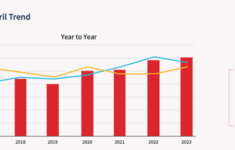The hurricane research team at Colorado State University has slightly lowered its outlook for the Atlantic hurricane season but is still calling for above-average action.
The CSU Tropical Meteorology Project team is now predicting 18 named storms in 2022, including the three named storms that have already formed (Alex, Bonnie and Colin). Of the 15 remaining named storms forecasted, researchers expect eight to become hurricanes and four to reach major hurricane strength (Category 3 or more).
Right after the hurricane season began on June 1, the CSU Tropical Meteorology Project called for 20 named storms, with 10 hurricanes. This was an uptick from the team’s April forecast.
The average Atlantic hurricane season has about 14 named storms, seven hurricanes and three major hurricanes.
Phil Klotzbach, meteorologist and author of the CSU forecast report, said one reason for the decrease in the forecast was “model guidance came in lower with this prediction cycle.” CSU said sea surface temperatures, a factor in hurricane formation, are only slightly above normal. Therefore, the team considers this a mostly neutral factor for the remainder of the season. The team also said it believes that the climate pattern called El Niño is extremely unlikely this year. El Niño typically tends to tear apart hurricanes as they try to form.
The report also includes the probability of major hurricanes making landfall after Aug. 4:
- 68 percent for the entire U.S. coastline (full-season average for the last century is 52 percent)
- 43 percent for the East Coast including the Florida peninsula (full-season average for the last century is 31 percent)
- 43 percent for the Gulf Coast from the Florida panhandle westward to Brownsville (full-season average for the last century is 30 percent)
- 57 percent for the Caribbean (full-season average for the last century is 42 percent)
Source: CSU





















 Retail Workers Consider Quitting Due to Safety Concerns Ahead of Holiday Shopping Season
Retail Workers Consider Quitting Due to Safety Concerns Ahead of Holiday Shopping Season  Hurricanes Helene, Milton Pressure NFIP; Expected Loss Ratio 200%
Hurricanes Helene, Milton Pressure NFIP; Expected Loss Ratio 200%  Safeco to Take Personal Lines Renewal Business of Main Street America
Safeco to Take Personal Lines Renewal Business of Main Street America  Allstate Insurers Sue Hyundai, Kia to Pay for Claims From Defective Cars
Allstate Insurers Sue Hyundai, Kia to Pay for Claims From Defective Cars 




